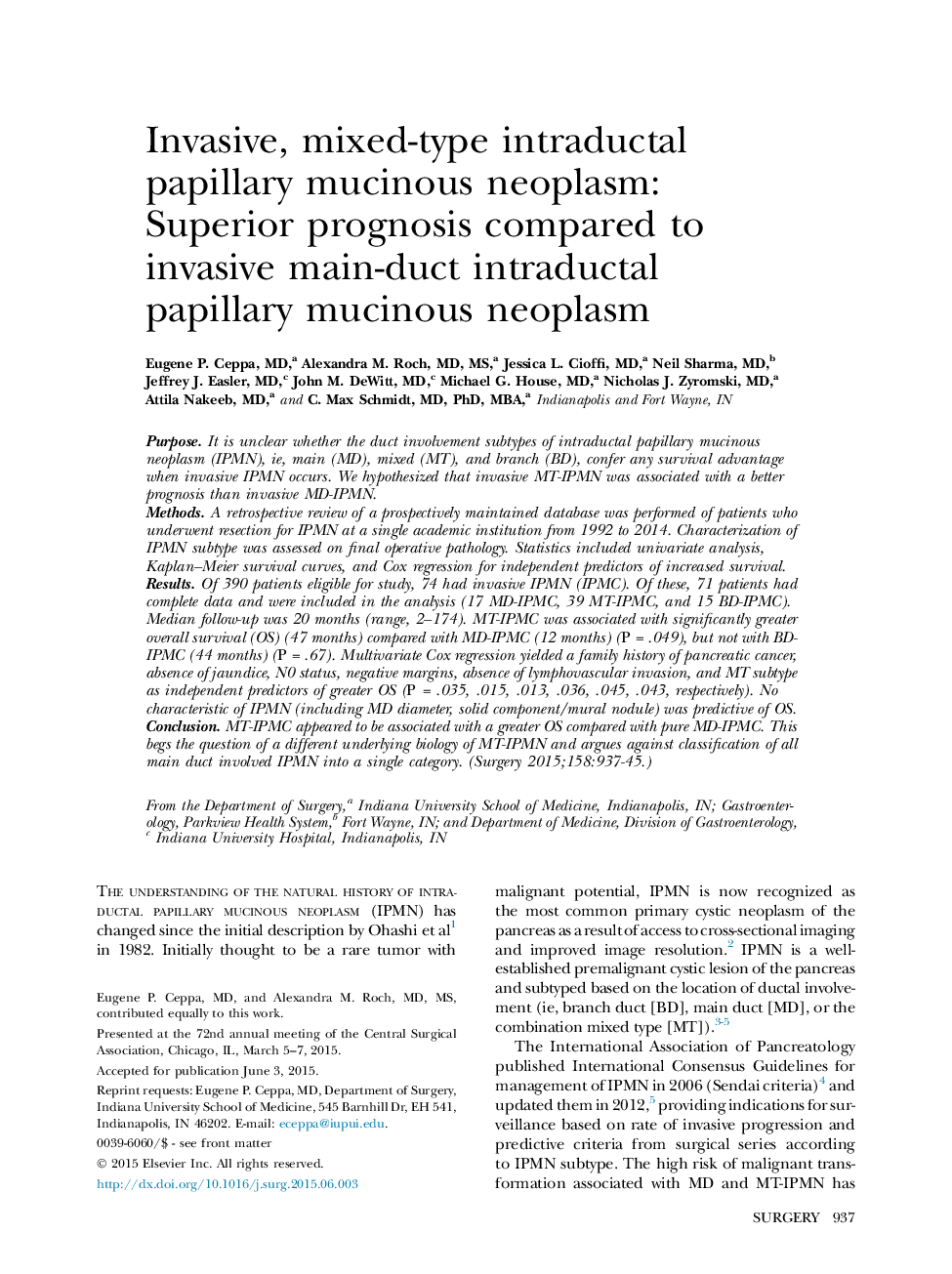| Article ID | Journal | Published Year | Pages | File Type |
|---|---|---|---|---|
| 4306941 | Surgery | 2015 | 9 Pages |
PurposeIt is unclear whether the duct involvement subtypes of intraductal papillary mucinous neoplasm (IPMN), ie, main (MD), mixed (MT), and branch (BD), confer any survival advantage when invasive IPMN occurs. We hypothesized that invasive MT-IPMN was associated with a better prognosis than invasive MD-IPMN.MethodsA retrospective review of a prospectively maintained database was performed of patients who underwent resection for IPMN at a single academic institution from 1992 to 2014. Characterization of IPMN subtype was assessed on final operative pathology. Statistics included univariate analysis, Kaplan–Meier survival curves, and Cox regression for independent predictors of increased survival.ResultsOf 390 patients eligible for study, 74 had invasive IPMN (IPMC). Of these, 71 patients had complete data and were included in the analysis (17 MD-IPMC, 39 MT-IPMC, and 15 BD-IPMC). Median follow-up was 20 months (range, 2–174). MT-IPMC was associated with significantly greater overall survival (OS) (47 months) compared with MD-IPMC (12 months) (P = .049), but not with BD-IPMC (44 months) (P = .67). Multivariate Cox regression yielded a family history of pancreatic cancer, absence of jaundice, N0 status, negative margins, absence of lymphovascular invasion, and MT subtype as independent predictors of greater OS (P = .035, .015, .013, .036, .045, .043, respectively). No characteristic of IPMN (including MD diameter, solid component/mural nodule) was predictive of OS.ConclusionMT-IPMC appeared to be associated with a greater OS compared with pure MD-IPMC. This begs the question of a different underlying biology of MT-IPMN and argues against classification of all main duct involved IPMN into a single category.
